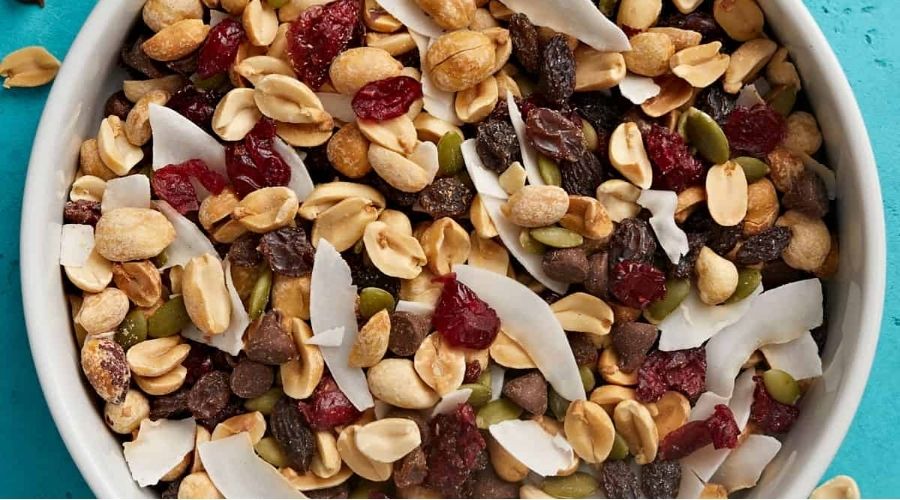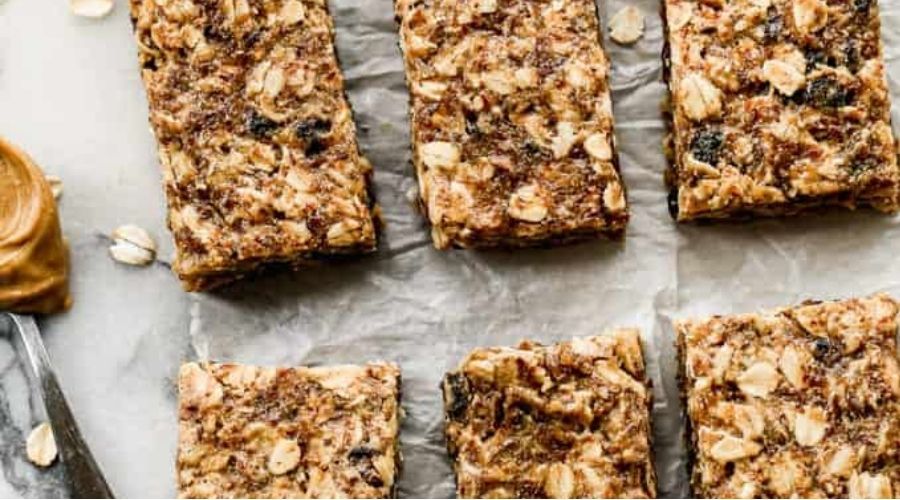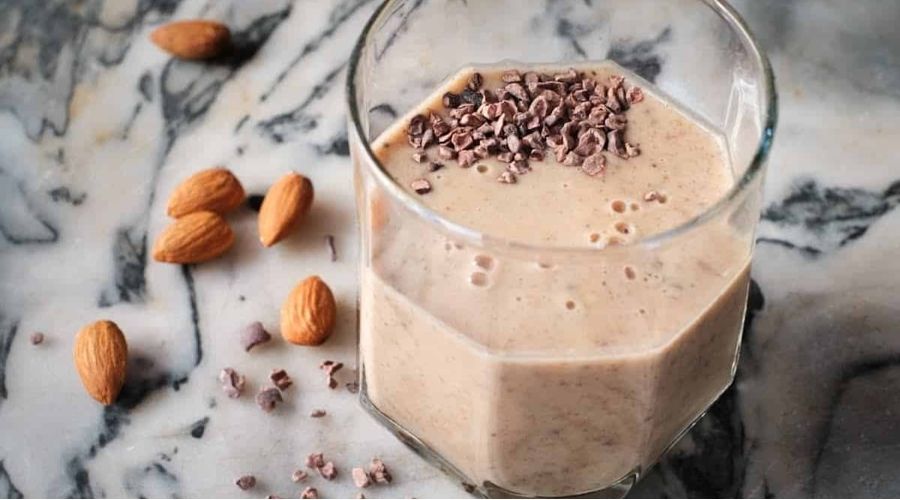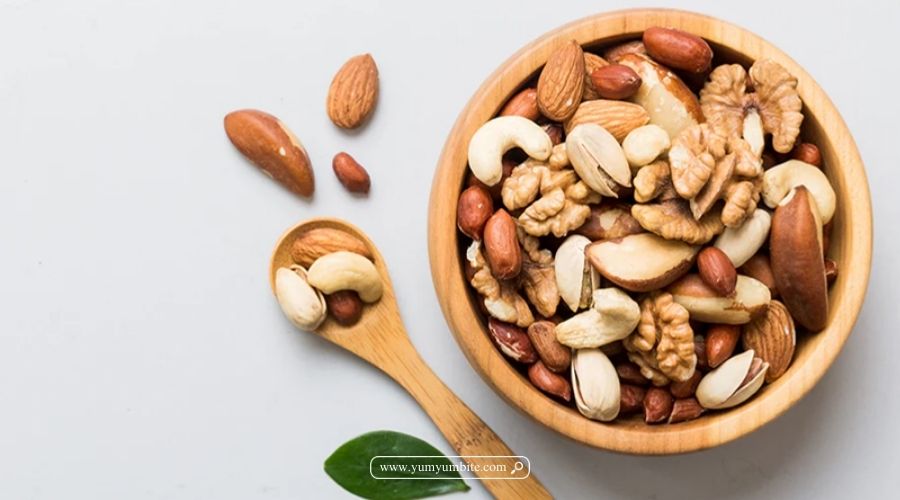Leftover nuts can often be an afterthought in the kitchen, relegated to the back of the pantry or left to languish in a forgotten bag.
However, these nutrient-packed morsels hold incredible potential that goes far beyond mere snacking.
Whether you have a handful of almonds from a baking project or a mix of pecans and walnuts after a holiday feast, there are countless creative and delicious ways to utilize leftover nuts.
From enhancing your favorite recipes to creating new dishes, this article will explore a variety of innovative ideas that transform your leftover nuts into culinary treasures.
Let’s dive into the wonderful world of nut-based recipes and discover how to make the most of what you have!
What to Do with Leftover Nuts: Creative Recipes and Ideas
Embracing the versatility of leftover nuts can significantly reduce waste while adding flavor, nutrition, and texture to your meals.
From homemade nut butter to savory nut-crusted proteins, the possibilities are virtually endless.
By incorporating these nutty delights into your cooking and baking, you not only make the most of your pantry staples but also introduce exciting new flavors into your diet.
So next time you find yourself with a stash of leftover nuts, remember the myriad of options at your fingertips.
With a little creativity and inspiration, you can turn those leftovers into mouthwatering dishes that your family and friends will love.
Homemade Nut Butter
A great option for leftover nuts is transforming them into homemade nut butter. Almonds, cashews, or mixed nuts can all be blended into a smooth and creamy spread with just a little oil and a pinch of salt.
This process allows you to control the ingredients, making it a healthier alternative to store-bought nut butters, which can sometimes contain added sugar and preservatives.
Additionally, homemade nut butter can be used in a variety of recipes, from toast toppings to baking ingredients.
When making nut butter, it’s important to watch the consistency while blending, as the natural oils in the nuts will determine how creamy or chunky it turns out.
Just be cautious about over-blending, as the heat from prolonged blending can affect the taste and texture.
If you prefer a crunchy texture, stop blending sooner.
Homemade nut butter also lasts for weeks when stored in an airtight container in the refrigerator.
Nutty Toppings for Salads or Yogurt
Another excellent use for leftover nuts is to incorporate them into your salads or yogurt bowls as a crunchy topping.
Toasting the nuts first enhances their flavor and brings out a richer taste. Simply spread the nuts on a baking sheet and roast them in the oven at 350°F (175°C) for about 8-10 minutes, stirring occasionally.
Roasted nuts add a satisfying texture to green salads, grain bowls, or even yogurt parfaits, making a regular dish more exciting.
You can also toss them in spices like cinnamon or smoked paprika before roasting for an extra flavor boost.
The only caution here is to watch them closely while roasting, as nuts can burn quickly. Store roasted nuts in an airtight container to maintain their crunch.
You can also experiment with different flavor profiles, like adding honey for a sweet crunch or chili powder for a spicy kick.
Homemade Trail Mix

Leftover nuts can easily be turned into a delicious, portable snack by creating a homemade trail mix.
Combine different varieties of nuts with dried fruits, seeds, chocolate chips, and even a sprinkle of coconut flakes for a balanced mix of flavors and nutrients.
Trail mix is a great snack to keep on hand for when you’re on the go, offering a combination of protein, healthy fats, and fiber to keep you satisfied between meals. Plus, the versatility allows you to cater the mix to your taste preferences, whether you prefer something sweet, savory, or a mix of both.
One thing to be mindful of is portion control—trail mix can be calorie-dense, so enjoy it in moderation if you’re watching your intake. To keep it fresh, store your homemade trail mix in a sealed container or bag.
You can even package it into single-serving portions for an easy grab-and-go snack option.
Nut-Based Pesto or Sauces
For a savory twist, you can use leftover nuts to make a nut-based pesto or sauce.
Traditionally, pine nuts are used in pesto, but you can experiment with other types of nuts like walnuts, almonds, or pistachios to create a unique and flavorful sauce.
Simply blend the nuts with garlic, olive oil, fresh herbs like basil or parsley, and a squeeze of lemon juice to create a versatile sauce that can be used for pasta, spread on sandwiches, or drizzled over roasted vegetables.
Nut-based sauces add a rich texture and depth of flavor to dishes. Just be cautious when adding salt, especially if the nuts you’re using were already salted. Taste as you go to achieve the perfect balance of flavors.
Nut pesto can be stored in the refrigerator for up to a week or frozen for longer storage, making it a convenient option for meal prepping.
Nut Flour for Baking
Leftover nuts can be ground into nut flour, which is an excellent gluten-free alternative for baking.
Almond flour, in particular, is widely used in many recipes, but other nuts such as hazelnuts, pecans, or pistachios can also be ground to create a fine flour.
Nut flour adds a rich, slightly nutty flavor to baked goods like cookies, cakes, and bread.
It can also boost the nutritional value of your recipes by adding healthy fats, fiber, and protein.
When making your own nut flour, it’s important to pulse the nuts in a food processor or blender in short bursts to avoid turning them into nut butter.
Additionally, nut flour can sometimes make baked goods denser, so you may need to adjust the amount of liquid in your recipe.
Store nut flour in an airtight container in the refrigerator or freezer to prevent it from going rancid.
Nut Milk
If you have a lot of leftover nuts, making nut milk is another great option. Almonds, cashews, and even hazelnuts can be soaked and blended with water to create a creamy, plant-based milk alternative.
Nut milk is perfect for smoothies, coffee, cereals, or simply drinking on its own. It’s free of preservatives and additives often found in store-bought versions, making it a healthier option.
To make nut milk, soak your nuts overnight, then blend with water and strain through a nut milk bag or fine mesh. The result is a fresh, creamy milk that lasts about 3-5 days in the refrigerator.
Be mindful of the shelf life—because homemade nut milk doesn’t contain preservatives, it spoils faster than commercial versions.
You can also add natural sweeteners like honey or vanilla for extra flavor. The leftover nut pulp can be used in baking, making this a zero-waste option.
Energy Bites or Protein Bars

Leftover nuts are perfect for making energy bites or homemade protein bars, offering a quick and nutritious snack that’s easy to grab on the go. Blend the nuts with dates, oats, and a scoop of protein powder, then shape the mixture into small balls or bars.
These energy bites are packed with protein, fiber, and healthy fats, making them a filling snack. You can also customize the flavors by adding cocoa powder, dried fruit, or even peanut butter.
One caution is to be careful not to make the mixture too dry or too sticky; adjusting the number of dates or the type of nuts you use can help balance the texture.
Store these bites in the fridge or freezer to extend their shelf life.
They’re a great option for meal prepping and can be made in large batches to last throughout the week.
Nut Crust for Pies or Cheesecakes
Another creative way to use leftover nuts is by making a nut-based crust for pies or cheesecakes.
Instead of a traditional graham cracker or flour crust, crushed nuts can be combined with butter, sugar, or a natural sweetener to form a delicious, gluten-free crust.
This nutty base adds a rich, crunchy texture that pairs well with creamy fillings like cheesecake, pumpkin pie, or chocolate tarts.
Simply pulse the nuts in a food processor until finely ground, then mix with melted butter and press into your pie dish before baking or chilling.
Be cautious of the sugar content—if your nuts are already sweetened or roasted with flavors, you may want to reduce the amount of added sweetener.
A nut crust is best suited for no-bake pies or those baked at lower temperatures to avoid over-toasting the nuts.
Store any leftover crust or unbaked filling in the refrigerator for later use.
Nut-Infused Oils
Using leftover nuts to create nut-infused oils is a delightful culinary option.
By gently heating the nuts in a neutral oil, you can extract their flavors and create a fragrant oil perfect for drizzling over salads, pasta, or roasted vegetables.
For example, hazelnut oil adds a wonderful depth to dressings and can elevate the taste of a simple vinaigrette.
To make your own infused oil, toast the nuts lightly to enhance their flavor, then add them to a pot with your chosen oil (like olive or grapeseed) and warm it on low heat for about 30 minutes.
Be cautious not to let the oil get too hot, as this can lead to burning and an off-taste. Once cooled, strain the mixture and store it in a clean, airtight bottle.
This infused oil can last for several weeks in the refrigerator, making it a versatile addition to your pantry.
Nut-Based Granola
Leftover nuts are a fantastic ingredient for homemade granola.
Combining nuts with oats, sweeteners like honey or maple syrup, and add-ins like dried fruits or seeds creates a nutritious breakfast option or snack.
Making your own granola allows you to control the sweetness and customize flavors to your liking.
Simply mix the nuts and other ingredients in a bowl, spread the mixture on a baking sheet, and bake at a low temperature until golden and crispy.
Caution should be taken to stir the granola occasionally during baking to ensure even browning and prevent burning.
Once cooled, store it in an airtight container to maintain its crunch.
Homemade granola is not only delicious but can also be enjoyed as a topping for yogurt or smoothie bowls, adding both texture and flavor.
Nutty Energy Smoothies

Leftover nuts can be blended into smoothies to create a creamy, nutrient-rich drink. Nuts like cashews or almonds add healthy fats and protein, making your smoothie more filling and satisfying.
To make a nutty smoothie, simply blend a handful of nuts with your choice of fruits, yogurt or a dairy-free alternative, and a splash of milk or juice.
This combination provides a great source of energy and can serve as a meal replacement or post-workout snack. One caution is to be mindful of portion sizes; nuts are calorie-dense, so a small handful is usually sufficient.
You can also soak the nuts overnight for a creamier texture in the smoothie.
Experiment with different combinations, adding greens like spinach or kale for an extra nutrient boost.
Nut-Crusted Proteins
Another creative way to utilize leftover nuts is to use them as a crust for proteins like chicken, fish, or tofu.
Crushing the nuts and mixing them with herbs, spices, and a bit of breadcrumbs creates a flavorful coating that adds texture and nutrition to your meal.
For instance, a pistachio crust on salmon or almond-crusted chicken can turn a simple dish into something special.
To make a nut-crusted protein, coat the protein in a bit of egg or yogurt, then press the nut mixture onto the surface before baking or frying.
One caution is to monitor the cooking time closely; nuts can burn easily, especially if cooked at high temperatures.
This technique not only enhances the flavor of the protein but also provides a satisfying crunch, making it a delicious way to repurpose leftover nuts in your kitchen.
How to Store/Freeze Leftover Nuts
Storing leftover nuts correctly can significantly extend their shelf life and preserve their quality.
Whether you choose to keep them in your pantry or freeze them for long-term storage, understanding the best practices for nut storage will help you avoid waste and enjoy the full benefits of your nuts.
Nuts can last for several months in a cool, dry place and even longer if frozen.
In this guide, you’ll find a step-by-step process for both short-term and long-term storage, ensuring your leftover nuts remain fresh and flavorful.
Step-by-Step Guide
- Choose the Right Container: Start by selecting an airtight container. Glass jars, plastic containers, or resealable bags work well to keep out air and moisture. If using a bag, ensure it is tightly sealed to prevent air from getting in.
- Cool and Dry: Before storing, make sure your nuts are completely cool and dry. If they’ve been roasted or are freshly opened, let them sit at room temperature for a while. This helps prevent moisture buildup inside the container, which can lead to mold.
- Label the Container: To keep track of freshness, label your container with the type of nuts and the date of storage. This will help you know when to use them by for optimal flavor.
- Choose the Storage Location: For short-term storage, place the container in a cool, dry pantry away from direct sunlight and heat sources. If you prefer to store them long-term, the freezer is a better option.
- Freezing for Long-Term Storage: If you opt for freezing, pour the nuts into a resealable freezer bag or an airtight container designed for freezing. Remove as much air as possible to prevent freezer burn. Nuts can be frozen for up to a year without significant loss of quality.
- Thawing Frozen Nuts: When you’re ready to use your frozen nuts, simply take out the amount you need and let them thaw at room temperature. They can also be used directly in cooking or baking without thawing, depending on the recipe.
Storing leftover nuts properly is essential for maintaining their freshness and flavor, allowing you to enjoy their benefits over time.
By using airtight containers, keeping them in cool, dry places, and understanding how to freeze them effectively, you can significantly extend the shelf life of your nuts.
Proper storage not only prevents waste but also ensures that your nuts are ready to enhance your meals, snacks, and recipes whenever you need them.
Whether you’re a nut lover who uses them frequently or just want to keep a few on hand, these simple steps will help you make the most of your leftover nuts, keeping them delicious and nutritious for as long as possible.
Can I use leftover nuts in baking?
Absolutely! Leftover nuts can be a fantastic addition to many baked goods. They can enhance the flavor and texture of cookies, cakes, muffins, and bread.
Just chop or grind them to your desired consistency and incorporate them into your batter or dough.
Keep in mind that different nuts have different flavors, so choose ones that complement your recipe!
How long can I store leftover nuts?
The storage time for leftover nuts depends on how you store them. In an airtight container in a cool, dry place, most nuts can last for about 3 to 6 months.
If you freeze them, they can maintain their quality for up to a year.
Always check for any off smells or changes in texture before using.
Can I make nut butter with leftover nuts?
Yes, you can! Leftover nuts are perfect for making homemade nut butter. Simply blend the nuts in a food processor until smooth, adding a little oil and salt if desired. This creates a creamy spread that can be used on toast, in smoothies, or as an ingredient in various recipes.
What are some savory dishes I can make with leftover nuts?
Leftover nuts can be used in a variety of savory dishes. Consider making a nut crust for proteins like chicken or fish, adding them to stir-fries for crunch, or using them in salads for added texture and flavor.
You can also incorporate them into sauces, pestos, or granola bars for a savory twist.
Is it safe to eat nuts that have been stored for a while?
While leftover nuts can be safe to eat after being stored for a while, always check for freshness before consuming.
Rancid nuts will have an unpleasant odor or a bitter taste.
If your nuts smell off or taste different, it’s best to discard them to avoid any unpleasant experiences.
Sources
- https://www.suddenlunch.com/leftover-nuts/
- https://createwellbeingltd.com/blog/leftover-pastieshtml
- https://allthatimeating.co.uk/blog/2020/12/31/favourite-recipes-to-use-up-leftovers/
- https://www.marissa.co/tag/how-to-use-leftover-fruit-and-nuts/


